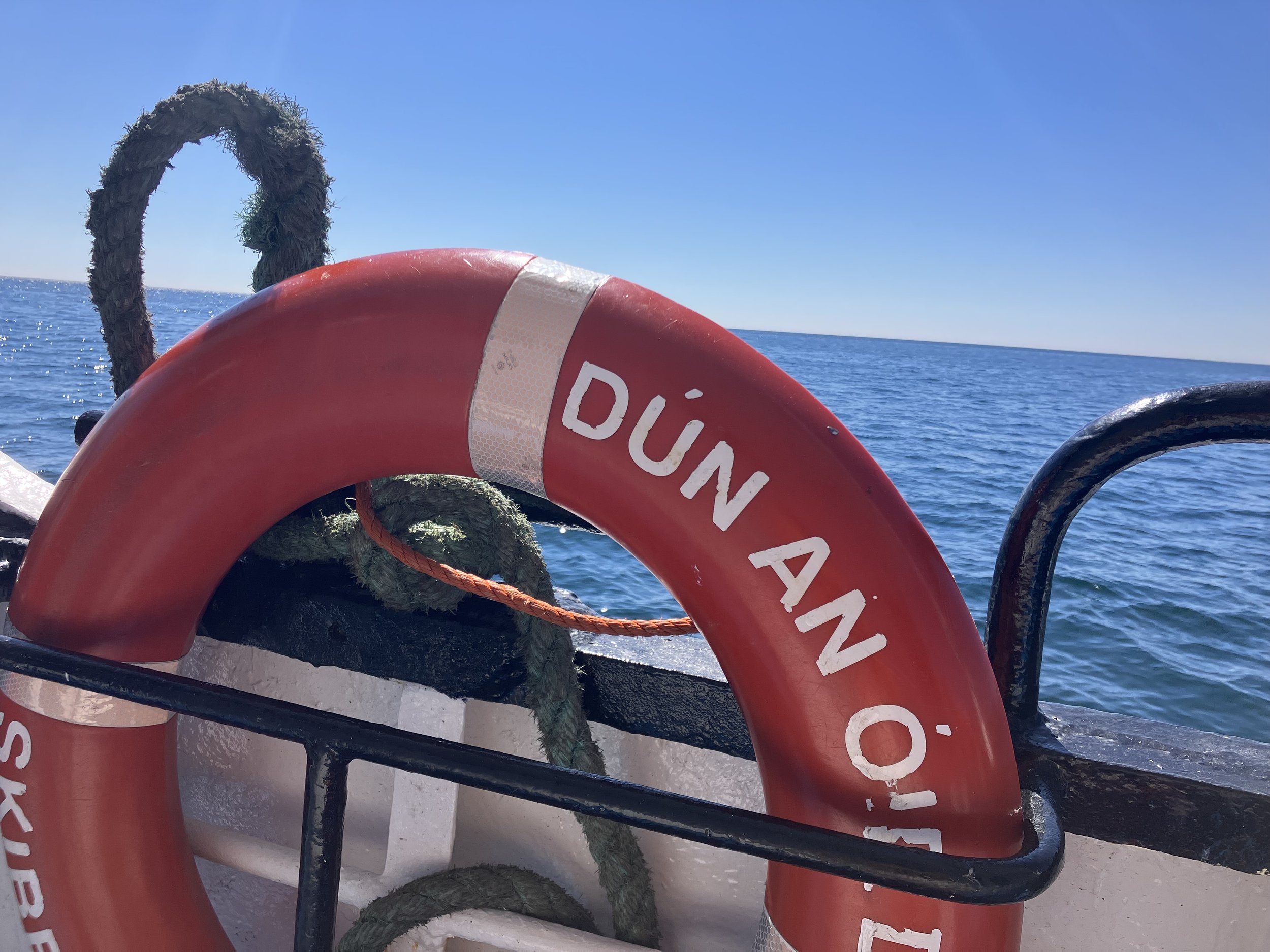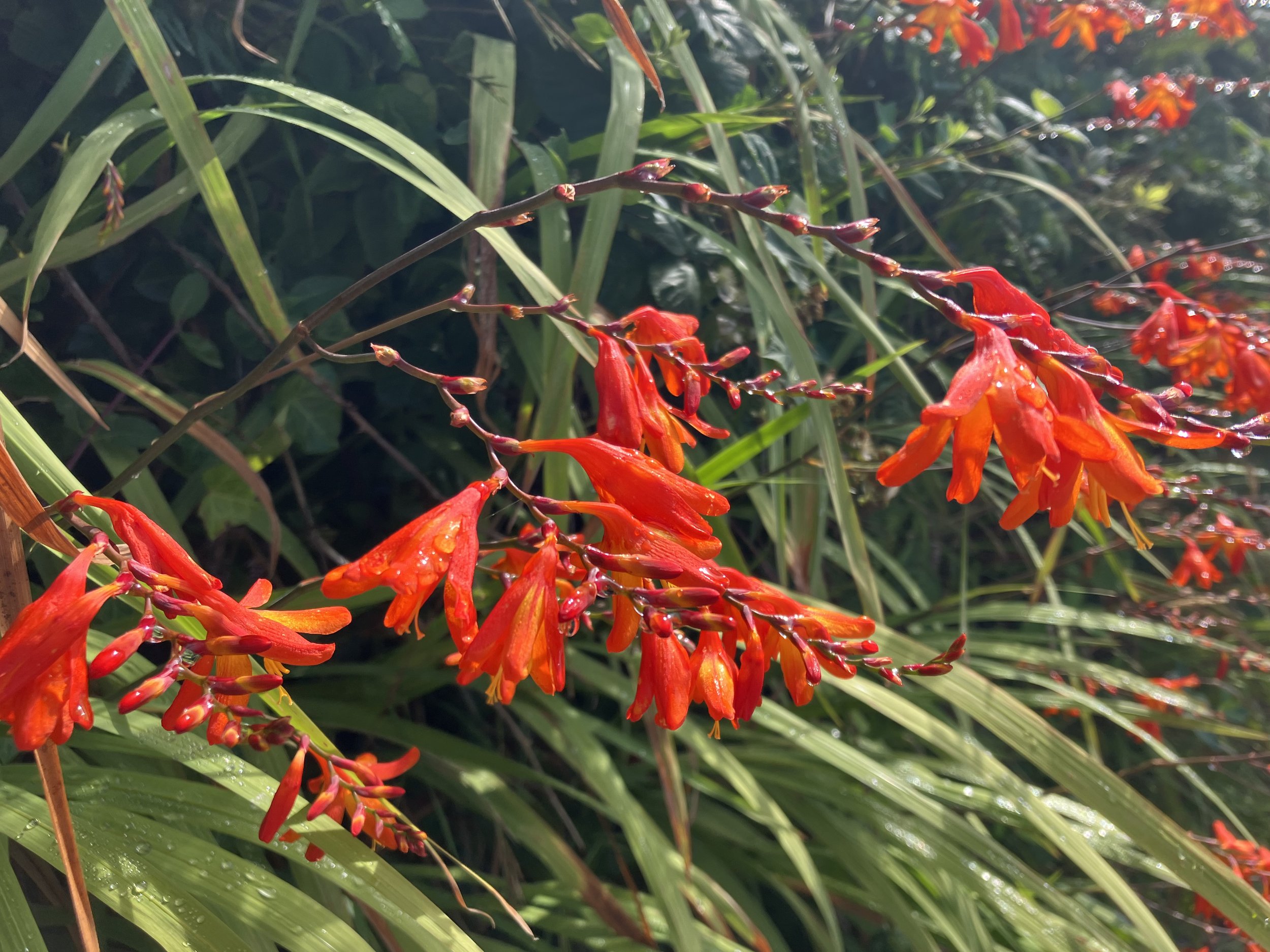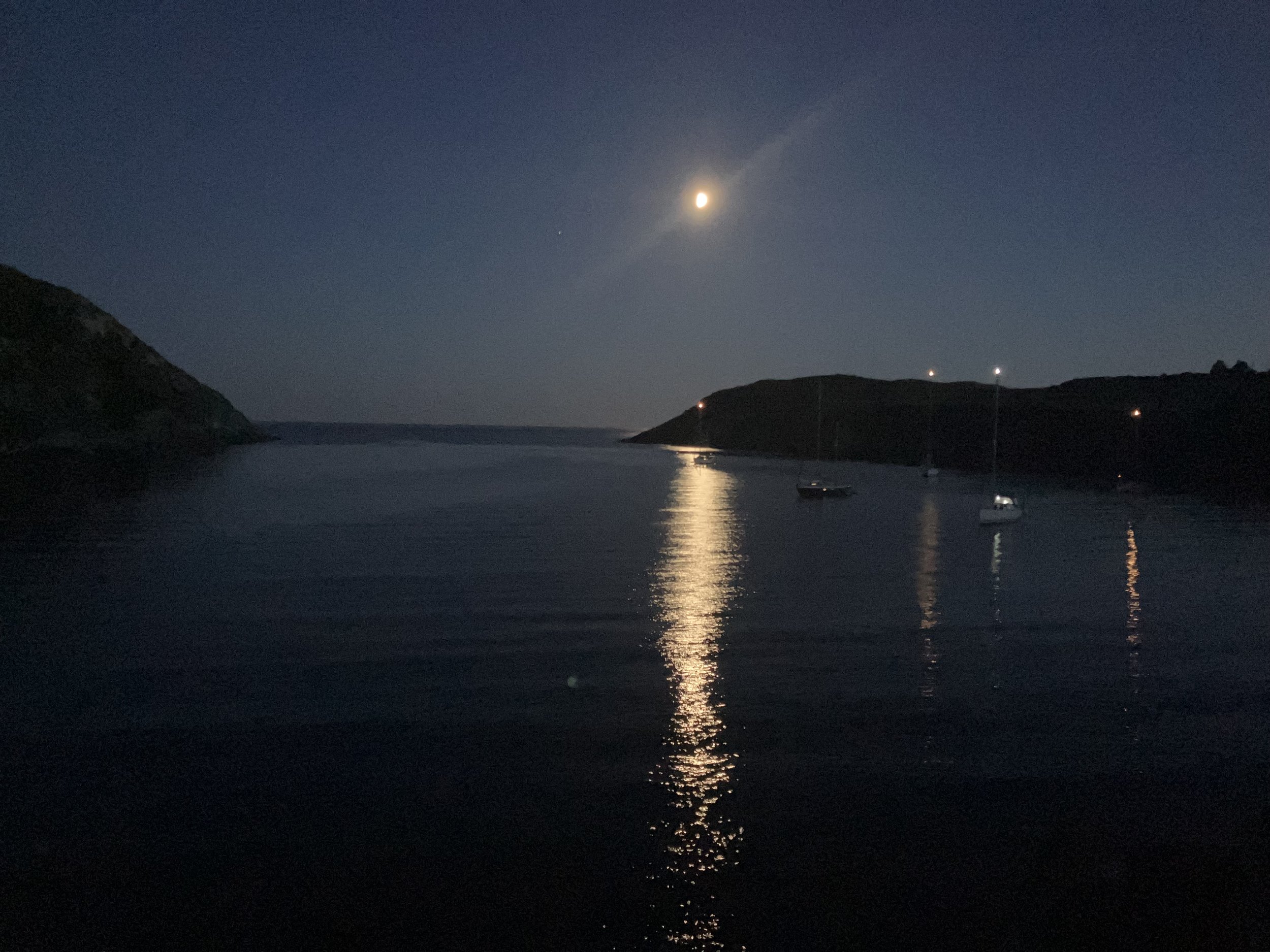Two months on Inis Chléire was a tonic. The small island felt expansive. The ocean was everywhere! People were not! I could breathe - and so could my thoughts. The first few weeks, I did just that. I explored, observed, jotted down notes. I picked blackberries from hedgerows, and looked up the Gaeilge for their neighbouring species. I watched the sunset.
I had hoped, upon embarking on the residency, that I would interact with the young people on the island, and that this would inform my writing - cén chaoi a mbíonn siad ag caint? / céard faoi a mbíonn said ag smaoineamh? - but as the Covid-19 restrictions increased this became more and more difficult.
Instead, I focused my attention on the island’s natural life. I was greeted each morning by a field of weary cows. I met Ed Harper who, because of a vision impairment, knows each of his goats by touch. I was introduced to Séamus Ó Drisceoll’s goat who was given medicine to stop his horn from growing, that only turned it curly instead. I visited an abandoned seal pup each day for a week.
Most of all, I was captivated by the island’s bird life, and was inspired by this to write a children’s story about a bird who is ‘beag agus buí le ceoilín binn’. This story weaves influences of the island’s rich folklore, landscape and placenames, and carries feelings of both belonging and aloneness; a tale of the island experience. I am grateful to Steve Wing from the Bird Observatory for taking time to speak to me on this subject.
This story became the book Parthas na nÉan. It was illustrated by an island resident, Leah O’Donoghue, and we launched the book on the island last Spring (2023).








